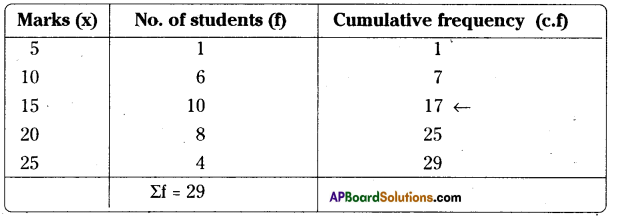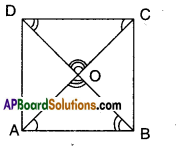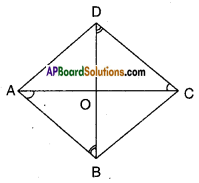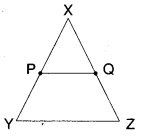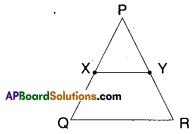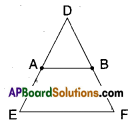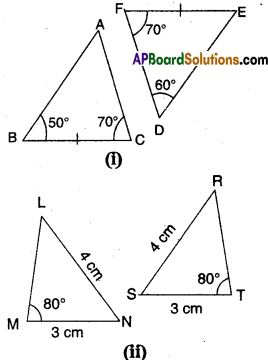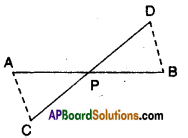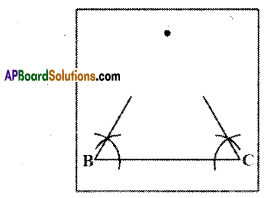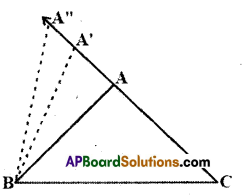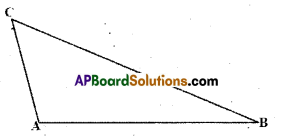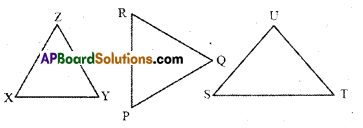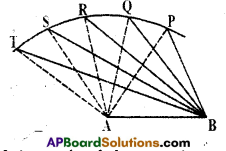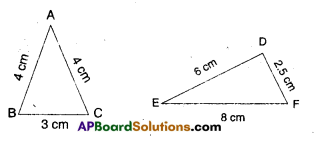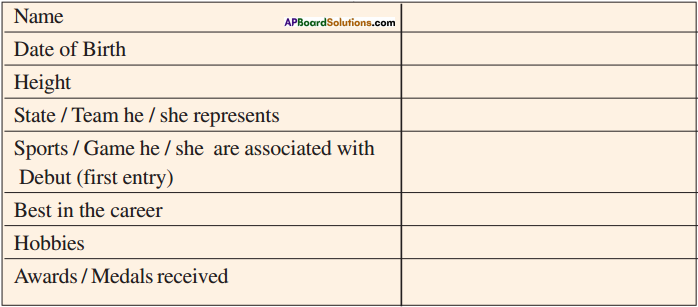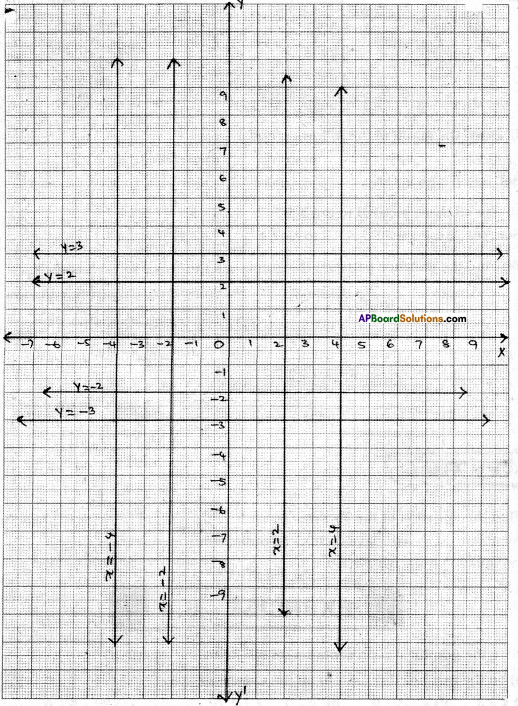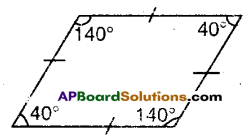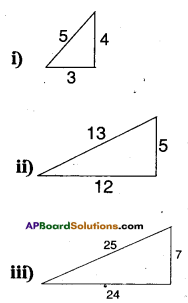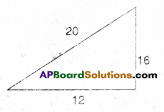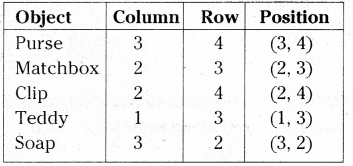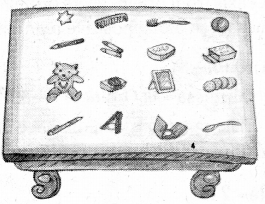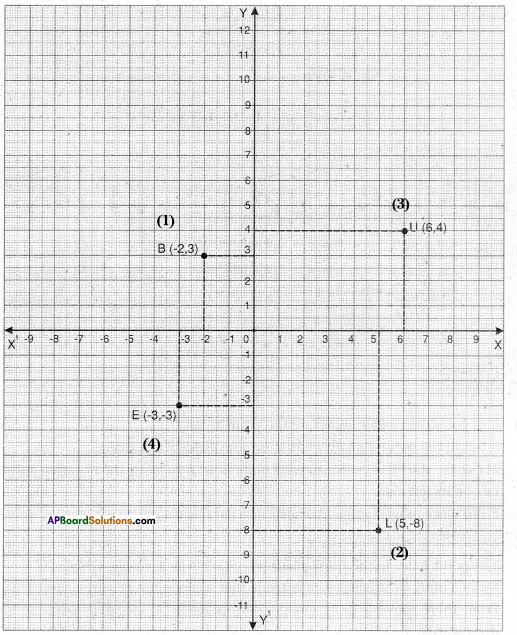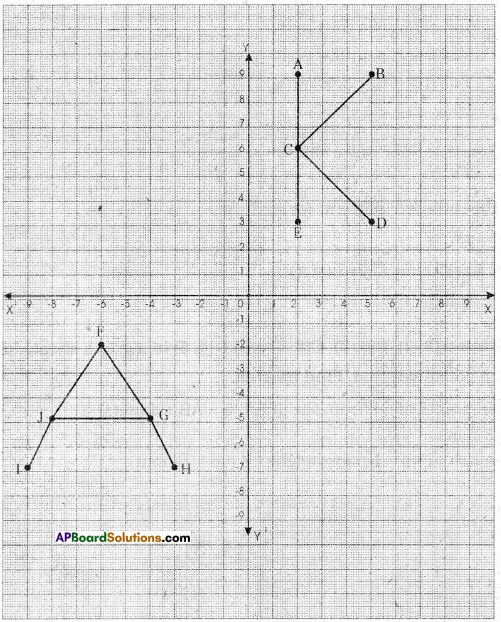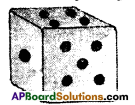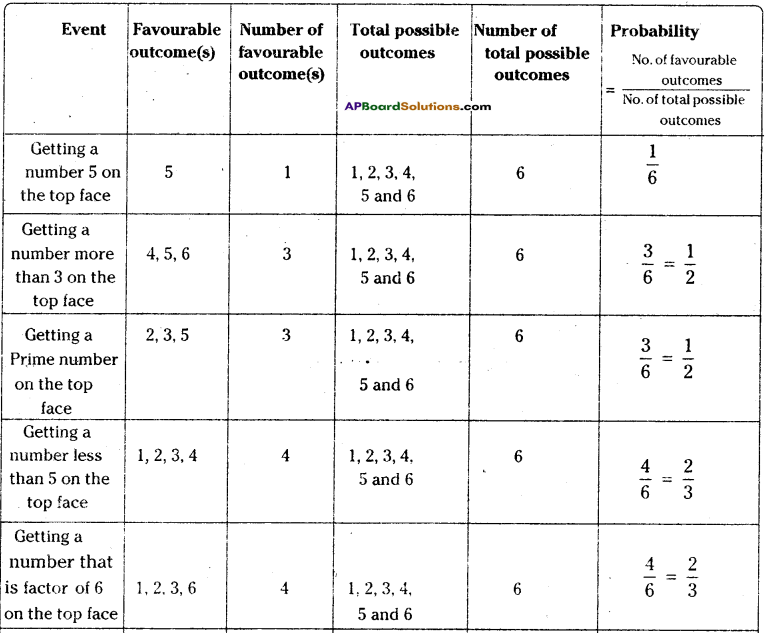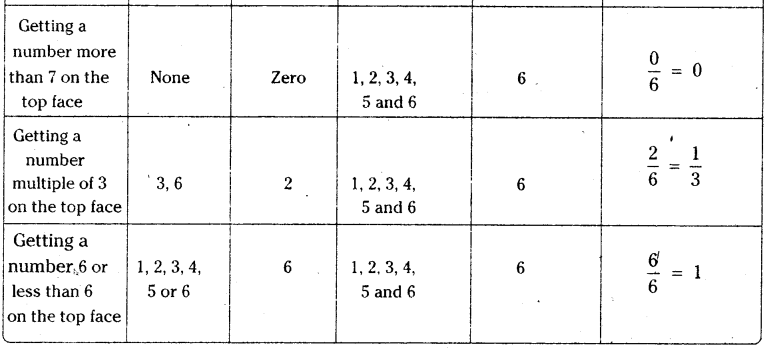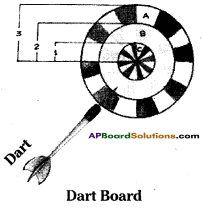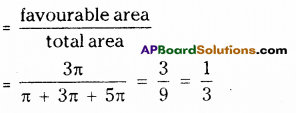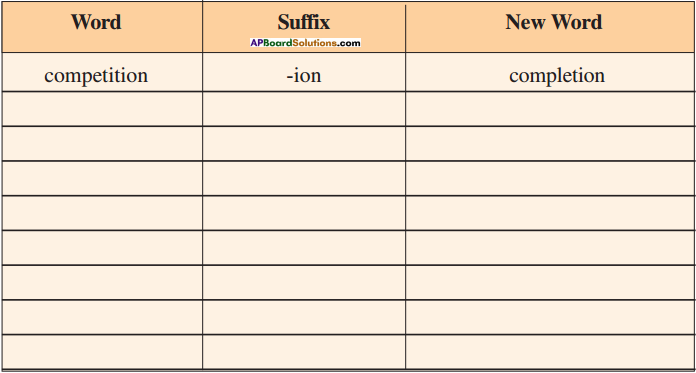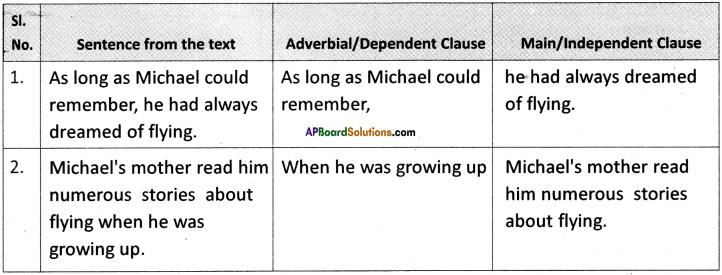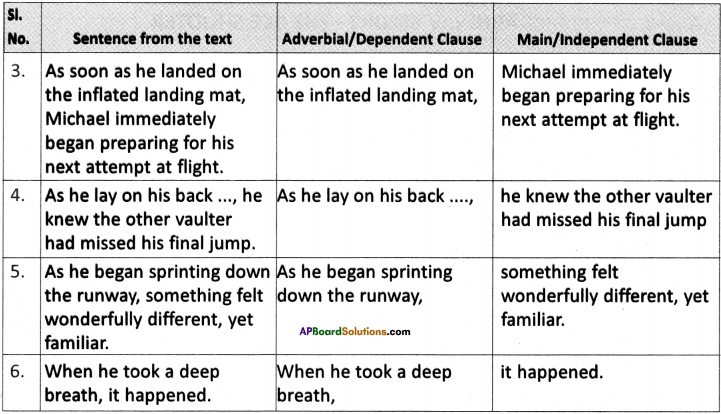AP State Syllabus AP Board 9th Class English Textbook Solutions Chapter 5A A Havoc of Flood Textbook Questions and Answers.
AP State Syllabus 9th Class English Solutions Chapter 5A A Havoc of Flood
9th Class English Chapter 5A A Havoc of Flood Textbook Questions and Answers
Look at the picture and answer the questions that follow.
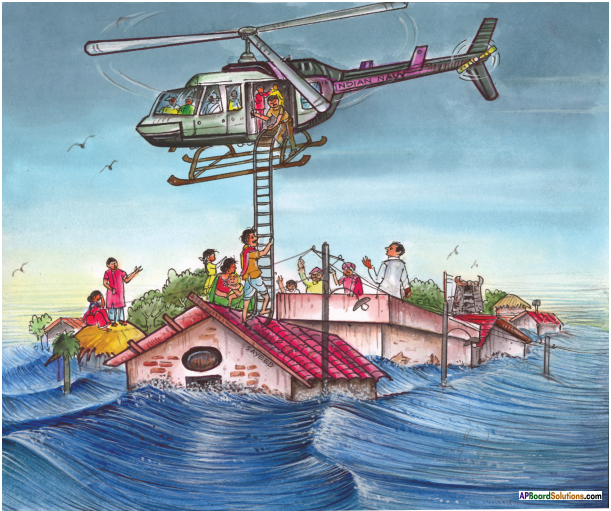
Question 1.
What made the people stand on the roof-tops?
Answer:
Floods of severe intensity made people stand on the roof-tops.
Question 2.
What are the people in the helicopter trying to do?
Answer:
People in the helicopter are trying to airlift the people standing on the roof-tops.

Question 3.
Have you ever seen a situation like this in your life? If yes, when and where did you see it?
Answer:
No, I haven’t seen a situation like that. But in cinemas and on TVs I have seen such situations.
Comprehension
I. Answer the following questions.
Question 1.
What mood is highlighted throughout the description? Pick out the words that suggest the mood.
Answer:
The mood highlighted in the description is that of sorrow, shock and horror. Some of the words that suggest the mood are : terrible, damp, cold, cloudy, gloomy, roaring, shattering, frantically, trauma, heart-rending, pathetic plight, catastrophe, aghast
Question 2.
Which of the scenes in the text has moved you the most? Why?
Answer:
A 40 year old widow Rajeswari staying at a roadside shelter with her four young children without food and water moved me. A mother watching silently the suffering of tender children is unbearable and unimaginable.

Question 3.
Who played the key role in the rescue operation of the floods? What steps were taken by the government?
Answer:
Government agencies, the army, the navy and personnel from Disaster Management Response Force played a key role in rescue operations. Government opened relief camps and distributed food, clothing, medicines etc., among the victims. Government also extended all possible help.
Question 4.
“The flood victims were looking on with wide open eyes for some help to meet their needs.” Can you guess what their needs may have been?
Answer:
The immediate needs of the flood victims are food, shelter, clothing and medicines.
Question 5.
“Help always pays gratitude.” In what way is this statement true in the light of the context?
Answer:
All the needs of the victims were met by government agencies, philanthropists and NGOs. The victims were thankful for the help. Hence the saying ‘Help always pays gratitude1’ is true.
Question 6.
How did the roaring floods disturb the lives of the people of Kurnool?
Answer:
The roaring floods destroyed houses, disturbed normal life, killed men and animals, shattered their hopes in Kurnool.
Question 7.
What relief measures would you suggest for the flood victims?
Answer:
Apart from basic needs like food and clothing, I would suggest emotional support to victims and permanent solution to floods.

Question 8.
What inspiration can you draw from the last two paragraphs of the lesson?
Answer:
Rajeswari’s courage, determination, hope and concern for children teach us very valuable lessons. And her sense of thankfulness to those who helped her is highly admirable.
Vocabulary
Read the following sentence and notice the meaning of the underlined word.
They reached their dwelling places hoping a bright morning the next day.
In this sentence ‘bright’ means ‘full of light’ or ‘shining strongly’ or ‘happy.’
A single word in English (with the same spelling and the same pronunciation) may have many meanings.
The correct meaning (or the suitable meaning) of that word is understood with the help of the context.
Words with multiple meanings are called HOMONYMS. (It is very interesting to improve one’s word power with the help of HOMONYMS.)
Some commonly used Homonyms are : kind, type, plant, articles, cricket, bat, bowl, sight, light, kite …..
I. Identify the meaning of ‘bright’ in each of the foliowing sentences and write your own sentences using ’bright1 in different meanings.
1. I like bright colours.
bright = strong, thick, easy to see
My uncle bought a bright blue dress for me.
2. Tejaswini gave me a bright smile, bright = cheerful and lively
On knowing the results, their eyes turned bright.
3. Sindu is a bright student.
bright = brilliant, quick to learn
Many teachers prefer to talk to bright students.
4. Yamuna has bright ideas.
bright = helpful
The manager always seeks bright ideas.
5. This young player has a bright future.
bright = likely to be successful
The students of this school can hope for a bright future.
6. We took rest in a bright room.
bright = full of light
As she kept all the windows open, the room was bright when we entered it.
II. Several people and things are involved in rescue operations. There is a description of a flood rescue operation. Complete the concept map given below with the suitable information from the text:

Answer:

Grammar
Read the following sentences from the text and notice the underlined words/ expressions.
1. No sooner had the relief team arrived there than their joy knew no bounds.
2. They had scarcely arrived at their destinations when the rain poured down.
In the above sentences the expressions “No sooner… than” and “scarcely… when” are used to suggest that one thing happened very soon after another. The expression ‘hardly … when’ is also used to express the same.
- Pairs of words like ‘No sooner… than’ ; ‘scarcely… when’ and ‘hardly…. when’ are called ‘correlative conjunctions’.
- They connect two expressions/clauses /actions. Hence they are conjunctions.
- They show the relationship between the two actions in terms of time. Hence they are correlatives.
- Special Note
1. ‘No sooner’ always goes with ‘than’ and ‘scarcely/hardly’ always go with ‘when’. They are inseparable.
2. ‘When ‘scarcely/hardly’ are used at the beginning of the clause, the helping verb is used before the subject, not after the subject. (Subject – helping verb inversion) If they are used after the subject, the word order is not changed. In the case of ‘No sooner’, there is inversion always.

Combine the following sentences using the expressions “No sooner… than, scarcely… when, hardly… when.”
One has been done for you.
1. I put the phone down. It rang again.
A : No sooner had I put the phone down than it rang again.
or
B : I had scarcely put the phone down when it rang again.
or
C : I had hardly put the phone down when it rang again.
2. I arrived at the station. Then the bus came in.
A : No sooner had I arrived at the station than the bus came in.
B : I had scarcely arrived at the station when the bus came in
C : I had hardly arrived at the station when the bus came in.
3. I closed the door. Somebody knocked it again.
A : No sooner had I closed the door than somebody knocked it again.
B : Scarcely had I closed the door when somebody knocked it again.
C : Hardly had I closed the door when somebody knocked it again.
4. She finished the meal. She started feeling hungry again.
A : No sooner had she finished her meal than she started feeling hungry again.
B : She had scarcely finished her meal when she started feeling hungry again.
C : She had hardly finished her meal when she started feeling hungry again.
5. Madhavi opened the door. The dog entered the room.
A : No sooner had Madhavi opened the door than the dog entered the room.
B : Scarcely had Madhavi opened the door when the dog entered the room.
C : Madhavi had hardly opened the door when the dog entered the room.
Writing
I. In the reading passage, one of the victims of the flood, Rajeswari shared her sufferings with the flood relief team. On the basis of this, develop an interview by a news reporter.
News Reporter : Rajeswari, could you tell me what had happened?
Rajeswari : ……………………………………………
News Reporter : ……………………………………………
Rajeswari : ……………………………………………
News Reporter : ……………………………………………
Rajeswari : ……………………………………………
News Reporter : ……………………………………………
Rajeswari : ……………………………………………
News Reporter : ……………………………………………
Answer:
News Reporter : Rajeswari, could you tell me what had happened?
Rajeswari : Oh! It was dreadful. The night of 27! Horrible! Downpour! Nonstop! We couldn’t believe our eyes! Even multi-storeyed buildings were shaking. What about our mud shack?
News Reporter : Has someone come to help you?
Rajeswari : Not immediately. As waters entered our small shaky house, I took my four children and ran for safety.
News Reporter : Could you easily find out a safe place?
Rajeswari : Yes, very close to my house, the road has a high side wall like structure which then stood above flood waters. So we all stayed there!
News Reporter : How long did you stay there?
Rajeswari : It was for two long days in open I Without food and water. Only flood water and our tears!
News Reporter : Hasn’t help reached you even then?
Rajeswari : Help in the form of rescue team in a fibre boat came to us. They took us to the nearby relief camp, gave us clothes and food. They promised to give money to repair my damaged house. They supported us well. May God be kind to them!
News Reporter : Even in your testing times you are so thankful and you think of their welfare! Great of you! May God bless you!

II. Assume that you happened to read some of the articles/news reports on the flood rescues. You were deeply moved by the sorrows of the victims of the floods. You decided to raise funds for the cause. You wanted to share this idea with your classmates and seek their assistance in this matter.
Prepare a speech/a talk that you would like to make to convince the donors about the need for raising funds for the cause.
You may use the ideas given below.
- Floods in Kurnool
- Damage occurred
- Human suffering and deaths
- Loss of property
- Death of animals
- Loss of crops
- Shortage of basic needs like food, clothing and shelter
- Importance of relief operations
- Moral responsibility
Answer:
My dear lovers of humanity!
Times call us to rise to the occasion. Here is a situation watching which none can remain unmoved. I know your concern for our fellow beings’ suffering : Recently Kurnool witnessed floods of grave intensity. Flood water reached house roof level. Hundreds of people lost their lives. Animals in thousands were covered in water and were dead. Loss of property runs into crores of rupees. Crops were damaged when they were about to be reaped. People now are crying for basic needs like food, shelter, water, clothes, medicines. They need moral support. They need assurance from us. They lost everything except hope. It is our duty to ensure their hope continues to live. It is our moral responsibility to extend to them whatever help we can ! You know ‘Service to man is service to God! And service to man in such dire need is the best kind of worship. I very humbly appeal to you all with folded hands. Let us join our hands. Let us collect men, money, materials etc. Let us support our brothern. Let us share their sorrow and suffering. Let us prove to the world that we love humanity!

III. Assume that you were one of the victims of the flood and received some help from a donor. Write a letter thanking him and expressing your gratitude.
Bus stand centre,
Kurnool.
01 October 2009. Respected Dharma Rao garu, Our gratitude makes us write thus. Pray that you and your family members are fine. Thank you so much for your generous help at a very apt time. Floods carried away everything from us except our lives and hope. When we were cursing our fate, help from you came like God-sent gift. It was really like a boat to a person drifting in waters with no shore. As we were thinking that our end was not far away, your timely help infused life and and hope into us. How much I may say, our gratitude still remains incompletely expressed. Persons like you prove to the world what humanity is, nay – what divinity is! May God bless you with what we call eternal bliss. I continue to pray to God to be kind to you and all your near and dear. I look forward to a chance to be of any use to you. I will be blessed if I get that opportunity. Once again our pranamams to you. Thankfully yours,
Rakshita. To
Sree Dharma Rao garu
H.No. 12-85
Near Masjid
KADAPA. |
IV. On the basis of the diagram given below write a paragraph stating the sequential series of actions/methods (preparation before, during and after) that can be taken for disaster management.
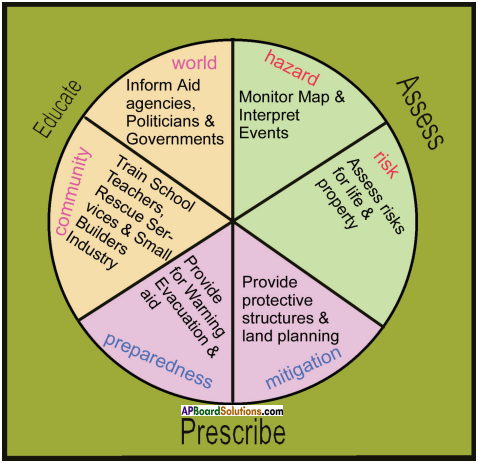
Answer:
Disaster Management includes different activities. First disaster-prone areas are to be assessed with the help of past occurrence and present events. And probable risk to life and property is to be estimated. Then protective structures and relief camps are to be planned and got constructed. After these preparatory arrangements, advance warning systems and evacuation machinery are to be put in place. Later community at large and teachers in particular are to be trained in rescue operations. And finally the outside world is to be informed about the disaster along with the particulars of loss and quantity of aid required. Effective Disaster Management depends on the execution of these steps in sequence.
Study Skills
Note-Making
We take notes when we read a book in order to record information for future reference. Such notes help us to revise lessons easily before examinations.
Let’s know the process of note-making.
- Read the passage once quickly
- Underline the key terms during the second reading s Note only the most important information
- Condense the information
- Omit examples and illustrations
- Organize the condensed information in a suitable format
- Keep a suitable title
Some strategies for condensing information.
- Use numbers instead of words
e.g. sixty eight written as 68 - Use short substitutes for long words
e.g. maths for mathematics - Use reduced verb forms
e.g. Killed instead of was killed - Use the ‘to-infinitive’ to indicate future time
e.g. relief teams to help the people - Use abbreviations and acronyms
e.g. IAF, AIR - Use condensed spelling of words
e.g. Dept, for Department, Dr. for Doctor
Here is a model answer for paragraphs 2 – 5 from your Reading Passage – A.
Floods in Kurnool

28-9-2009
a)No tourists
b)No buses
27-9-2009
a) heavy rainfall
b) damp, cold and cloudy climate
c) pouring rain
28-9-2009
a) river waters entered the streets
b) flood inundating houses
c) 20 lakh cusecs inflow to the Srisailam Dam
d) threat of flood on the banks of the Krishna
e) heart-rending scenes
f) people seeking help to rescue them
Now make notes from the following passage and then summarise it.
The word “disaster” is derived from Middle French “desastre” and from old Latin “disastro”. A disaster can be defined as any tragic event that can cause damage to life, property and destroy the economic, social and cultural life.
The natural disaster is a consequence when a natural hazard affects humans or built environment. Human vulnerability and lack of appropriate emergency management lead to financial, environmental and human loss. The resulting loss depends on the capacity of the population to support or resist the disaster. Disasters occur when hazards meet vulnerability.
A natural hazard will never result in a natural disaster in areas without vulnerability. Various phenomena like earthquakes, landslides, volcanic eruptions, floods and cyclones are all natural hazards that kill thousands of people and destroy a lot of money and property each year.
Natural hazards can strike in unpopulated areas and never develop into disasters. The rapid growth of the world’s population and its increased concentration often in hazardous environments has escalated both the frequency and severity of natural disasters. Tropical climate, unstable land forms, deforestation and non-engineered constructions m^kethe disaster-prone areas more vulnerable. Developing countries suffer more or less chronically by natural disasters.
Answer:
A) Notes :
Para 1 :
disaster rooted in French, Latin
damage to life and property
destroys economic, social and cultural life
Para 2 :
natural hazards affecting populated areas
vulnerability adds to loss
hazard + vulnerability = disaster
Para 3 :
earthquakes, floods etc – hazards
Para 4 :
hazards in unpopulated areas – not disasters
increasing population, tropical climate,
unstable land forms, deforestation,
non – engineered constructions increase vulnerability
developing countries – chronic – victims.
B) The word ‘disaster’ – rooted in French and Latin – means a damage-causing event that destroys economic, social and cultural life. Hazards affecting vulnerable populations result in disasters. Lack of emergency management mechanism leads to huge loss of life and property. Hazards like earthquakes and floods destroy life and property every year. Increasing populations, tropical climate, unstable land forms, deforestation and non-engineered constructions add to the vulnerability. Developing countries are the chronic victims.
Listening
Practise listening carefully. Then you will be able to speak.
Listen to the ’News Bulletin’ and answer the following questions.
News Bulletin
This is All India Radio. The news…. read by Latika Ratnam.
The headlines first…
An unprecedented flood caused a havoc in Krishna, Guntur, Kurnool and Mahabubnagar districts of Andhra Pradesh.
The Prime Minister visits the flood-affected areas tomorrow.
India defeated Pakistan in the triangular cricket series held at Brisbane, Australia.
Now the news in detail. Massive floods wreaked a havoc in Krishna, Guntur, Kurnool and Mahabubnagar districts of Andhra Pradesh. Water has been released from the dams of Srisailam, Nagarjuna Sagar and the Prakasam Barrage. About 400 villages have been inundated with floodwaters, 4 lakhs of people have become homeless. The death toll has reached 532 so far.
However, the rescue operations are in full swing. The Chief Minister of Andhra Pradesh has made an aerial survey of the flood-hit areas. An immediate aid of two lakhs of rupees has been announced to the members of the deceased. A relief of ten thousand rupees has been announced to the homeless. The C.M. has conducted an emergency meeting with the respective collectors of the flood-hit areas and asked them to set up rehabilitation camps immediately on war-footing.
1. What was the havoc caused by the flood?
Answer:
About 400 villages were inundated. Around 4 lakh people became homeless. 532 persons died till then.
2. What relief measures were taken by the Government of A.P.?
Answer:
The Chief Minister made an aerial survey. An immediate aid of rupees two lakhs was announced to the members of the deceased. A relief of rupees ten thousand was declared to the homeless. Rehabilitation camps were set up on war footing.
3. What are the other highlights of the news bulletin?
Answer:
1) The Prime Minister visits the flood-affected areas tomorrow.
2) India defeated Pakistan in the triangular cricket series held at Brisbane, Australia.
Oral Activity
Read the lesson “A Havoc of Flood” once again. On the basis of the ideas in it, prepare a mock interview for a TV/newspaper.
Work in groups and collect the information about the havoc caused, relief operations
etc., from the following.
1. Victims
2. Officials
3. Doctors
4. N.G.Os (Non-Governmental Organisations/Voluntary Organisations)
In each group one member will be the reporter and the others will play the other roles. Afterwards each group will make the presentation.
1. Interview with Victims :
TV Reporter : Hello, the floods seem to be very severe. Have you been receiving relief from anyone?
Victims : Yes, the floods have been very severe. Never before in our lives have we seen floods of this seriousness. Yes, as to relief, Government officials and voluntary organisations have been extending maximum help. But because of the large number of victims, damaged roads , dead telephones, disrupted power supply, relief is not in sufficient quantity and at right time. But expecting more than what we get would be a sin. We hope and pray for good days ahead.
TV Reporter : Thank you for your detailed inputs. Your positive attitude in these testing times is highly admirable. I firmly believe God will bless people of your kind.
Victims : Thank you.

2. Interview with Officials :
Reporter : Good afternoon sir. How have you been coping with the disaster?
Officials :
Good afternoon. We have been putting in our best efforts. All available men and materials have been put to use. Forecast of floods well in advance has helped us in planning. Warning of floods also helped us minimise the loss of lives and property.
Reporter : Are any other departments working with you?
Officials :
Yes, almost all the government departments are working with us. Some departments are directly on the field. Other departments support us from behind. Even non-government organisations and individuals join us in extending relief.
Reporter : Thank your sir.
3. Interview with Doctors :
Reporter : Good evening doctor. How is the health scenario in the flood affected areas?
Doctor : Good evening. Floods bring in a flood of diseases too. Water is contaminated. Cleanliness is totally missing. People don’t even think of hygiene. Doctors work with their focus on present illness and possible epidemics. Cooperation from every corner eases our job to some extent.
Reporter : Thank you doctor.

4. Interview with NGOs :
Reporter : Good morning gentlemen ! As government agencies are also actively involved in relief programmes, what do you think is the importance of your role?
NGO : Good morning. Yes, you have a valid point there ! But the fact is our job is to extend to the needy whatever help they require. Government Agencies are no doubt active. But they work in a certain frame work. For us, there are no such limitations. We help those who don’t fit into government schemes for one or the other reason. Any how, every one plays a significant role in times of trouble !
Reporter : Thank you. Your analysis is really eye opening !
NGO : You’re welcome.
A Havoc of Flood Summary in English
Water, water everywhere! 10 feet deep even in houses! For three or four days! Dead bodies of cattle and people, damaged houses, breached bunds, deafening cries for help, rescue, and relief teams that was the scene in Kurnool district on 28 September 2009. Continuous downpour during the night brought floods into the city and other villages. Never before in the known history was there such a heavy downpour. Floods from the Thungabhadra, the Handri Niva rivers added to the gravity. Lakhs of people lost their shelters. Loss of lives and property was at shocking levels. Government stepped in at once. The services of the Army, Navy and Disaster Management Agencies were sought. Helicopters, inflatable boats, fibre glass boats and other equipment were pressed into use. Voluntary organisations, institutions, individuals and philanthropists joined the relief operations. Camps for homeless were organised. Food, water, blankets, milk and medicines were distributed among victims. One Ms. Rajeswari 40 exhibited rare courage in rescuing herself and her four children. She expressed her gratitude to all those who helped her during their intense suffering.
A Havoc of Flood Glossary
havoc(n) : a situation in which there is a lot of damage and destruction
basin (n) : an area of land along a river with streams running down into it
namesake (n) : the same name
destination (n) : a place where one wants to reach
gloomy (adj) : sad ;unhappy
inundating (v+ing) : submerging ; filling with water
shattering (v+ing) : destroying
forecast(v) : tell in advance what is going to happen
bore the brunt (idiom) : received or suffered the major part of something bad
fury (n) : anger, severity
submerged (v-past tense) : covered in water
heart-rending (adj) : heart-breaking ; causing a lot of sadness
frantically (adv) : in a hectic way ; quickly ; with uncontrollable emotions
rescue (v) : save from a danger
trauma (n) : an upsettingly unpleasant condition
tributaries (n-plural) : rivers or streams that flow into a larger river
requisitioned (v-past tense) : demanded officially the use of
breached (v-past tense) : damaged, broken
inflatable (adj) : that which can be filled with air
reluctant (adj) : unwilling
groping (v+ing) : trying and finding something that cannot be seen
pathetic (adj) : causing pity
plight (n) : a difficult and sad situation
catastrophe (n) : a disaster
fastened (v-past tense) : tied or joined, tethered (Note : The letter’t’ is silent in ‘fasten’.)
aghast (adj) : horrified ; surprised
reaped (v-past tense) : cut crops ; harvested
rejuvenated (v-past tense) : made to look more lively
shack(n) : a small building made of wood or metal
flee (v) : run away from danger
despair (n) : hopelessness, sorrow
beaming (adj) : cheerful; pleased
AP SSC 9th Class English Textbook Solutions
![]()
![]()
![]()






